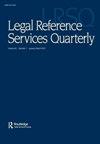May It Please the Court: A Longitudinal Study of Judicial Citation to Academic Legal Periodicals
Q4 Social Sciences
引用次数: 0
Abstract
Abstract Part I of this article examines the proportion of reported opinions from U.S. federal and state courts between 1945 and 2018 that cite at least one academic legal periodical, while Part II applies that data beginning in 1970 to compare the proportion of opinions that cite to the flagship journals of 17 law schools selected and hierarchically categorized based on their U.S. News & World Reports rankings. Representing the most elite schools are Harvard Law Review and Yale Law Journal, the two longest running student-edited journals 1 at arguably the two most prestigious law schools in the United States, 2 followed by journals from three exemplar schools from the “Top 14,” and three law schools from each of the rankings' four tiers. This article explores these trends in the context of changes in technology, the judiciary, legal scholarship, and academic legal publishing.愿它取悦法庭:学术法律期刊司法引文的纵向研究
摘要本文的第一部分考察了1945年至2018年间美国联邦和州法院报告的意见中引用至少一本学术法律期刊的比例,而第二部分应用1970年开始的数据,比较了17所法学院的旗舰期刊引用的意见比例,这些学院根据《美国新闻与世界报道》的排名进行了分类。代表最精英学校的是《哈佛法律评论》和《耶鲁法律杂志》,这两本学生编辑时间最长的期刊1在美国最负盛名的两所法学院,2其次是“前14名”中的三所示范学校的期刊,以及排名四级的三所法学院。本文在技术、司法、法律学术和学术法律出版的变化背景下探讨了这些趋势。
本文章由计算机程序翻译,如有差异,请以英文原文为准。
求助全文
约1分钟内获得全文
求助全文
来源期刊

Legal Reference Services Quarterly
Social Sciences-Law
CiteScore
0.30
自引率
0.00%
发文量
13
期刊介绍:
An important forum for daily problems and issues, Legal Reference Services Quarterly will assist you in your day-to-day work as it has been helping other law librarians and members of the legal profession for over a decade. You will find articles that are serious, humorous, critical, or simply helpful to the working librarian. Annotated subject bibliographies, overviews of legal literature, reviews of commonly used tools, and the inclusion of reference problems unique to corporate law libraries, judicial libraries, and academic collections will keep you up-to-date on the continuously expanding volume of legal materials and their use in legal research.
 求助内容:
求助内容: 应助结果提醒方式:
应助结果提醒方式:


